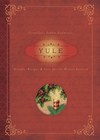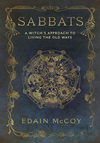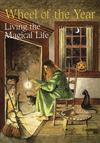Posted Under Paganism & Witchcraft
Yuletide Trivia and Fun Facts

So you think you know all there is to know about Yule? The history and origins and how certain delights came to be? Test your knowledge by reading some of the fun facts below—you may be surprised.
- Modern-day astronomers say that the famous Star of Bethlehem wasn't a star at all. More than likely, it was either a comet or an astronomical phenomenon caused by the conjunction of several planets at
- According to historical records, the first American Christmas festivities took place in Jamestown in 1607. The celebration was a device to cheer up the forty settlers who had survived living in the New World. (The original number was one hundred.)
- Because the British Parliament felt Christmas was a heathen holiday, they officially abolished all related festivities in 1643.
- The historical records of 1836 show Alabama as the first state in the Union to give Christmas the status of legal holiday. Oklahoma was the last state to conform; they didn't declare it a legal holiday until 1907.
- The first commemorative Christmas stamp was issued in Austria in 1937.
- Donder (not Donner), was the original name of the reindeer who helped pull Santa's sleigh on Christmas Eve. He was paired with Blitzen, whose name means lightning.
- The story of Rudolph the Red-Nosed Reindeer was written specifically as a sales gimmick for the Montgomery Ward Company in 1939 by one of their employees, Robert L. May. The little book was given freely to every customer who shopped there during the holiday season.
- The candy cane first gained popularity in churches, where it was given as a treat to children who behaved themselves during services.
- Eggnog wasn't always the creamy, rich drink we know today. It's a derivative of a seventeenth-century ale called "nog." The Irish celebrated each Christmas Eve by drinking a pint or so, for in their country all pubs were closed on Christmas Day.
- Gingerbread houses became popular holiday gifts during the nineteenth century after the Brothers Grimm released the story of Hansel and Gretel.
- St. Francis of Assisi introduced the singing of carols to holiday church services.
- The first American carol—a song entitled "Jesus is Born"—was written by Reverend John de Brebeur in 1649.
- At midnight on the Christmas Eve of 1914, German gunfire suddenly halted and was replaced by the singing of carols. At daybreak, the German soldiers began to call out "Merry Christmas" to their foes. Before long, both sides had declared a truce, shook hands with each other, and exchanged gifts of food, cigarettes, and liquor. The merriment and goodwill lasted for three days.
- Along the shores of the Mississippi river—especially along the Louisiana coastline—bonfires are lit on Christmas Eve. Their purpose is to guide the way for Father Christmas.
- The image of Santa as we know it today was popularized by none other than the Coca-Cola Company.
- St. Nick doesn't get a vacation after the winter holidays. Since he's also the patron saint responsible for Greece, Russia, sailors, merchants, pawnbrokers, bakers, prisoners, children, and wolves, he's a very busy spirit year 'round.
Excerpted from Yule, by Dorothy Morrison

About Dorothy Morrison
Dorothy Morrison (Louisiana) is a third-degree Wiccan High Priestess of the Georgian Tradition, and she has been an avid practitioner of the Craft for more than fifty years. She founded the Coven of the Crystal Garden in ...
Related Products



Please note that the use of Llewellyn Journal articles
is subject to certain Terms and Conditions
is subject to certain Terms and Conditions
Link to this article: http://www.llewellyn.com/journal/article/1418